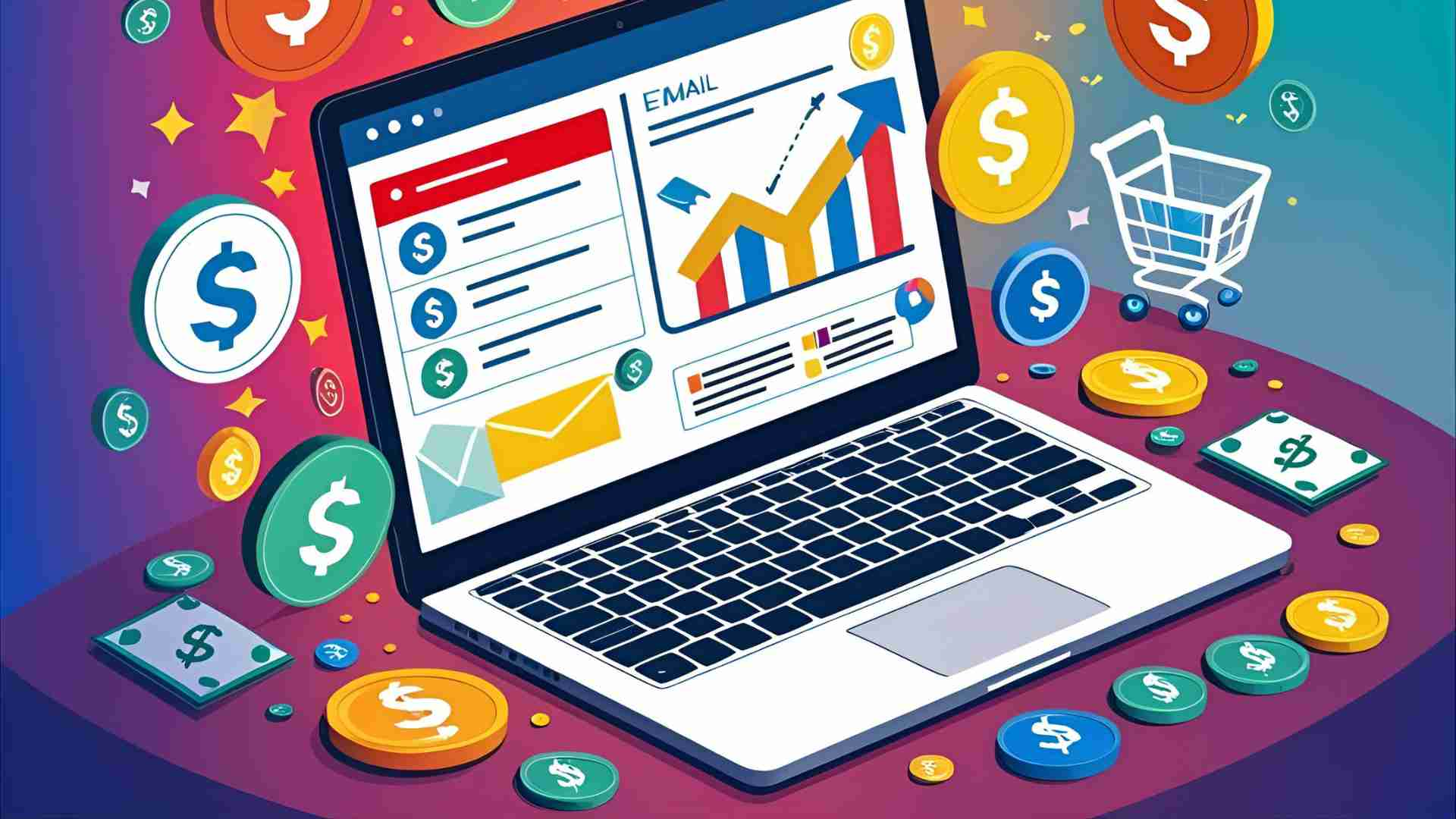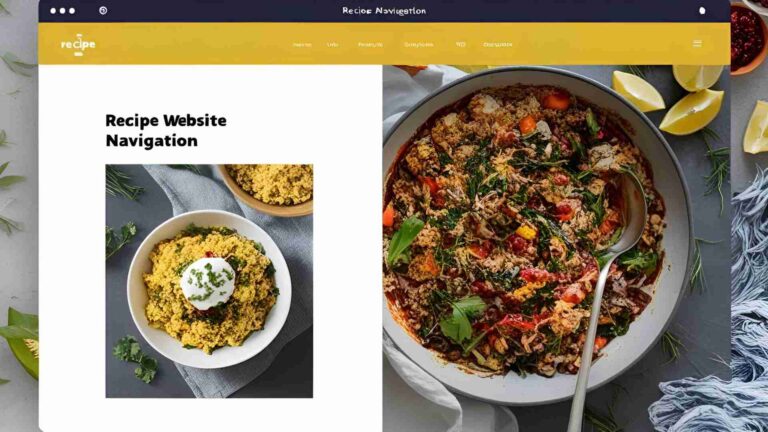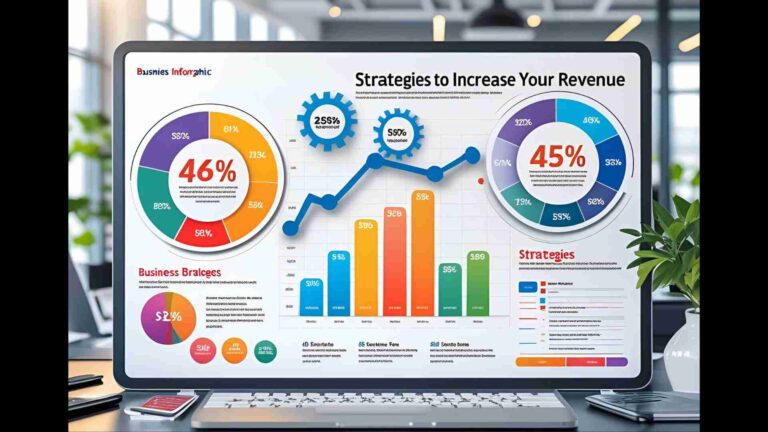7 Ways to Make Money With Your Email List
Discover 7 proven ways to monetize your email list, from affiliate marketing to paid webinars, and turn your subscribers into revenue.
Email marketing remains one of the most effective digital strategies for generating revenue, boasting an impressive ROI of up to 3,800%. The phrase “the money is in the list” holds true, but success requires more than just collecting email addresses. Building an engaged audience and strategically leveraging your email list can transform it into a consistent revenue stream. Whether you’re a creator, affiliate marketer, coach, or business owner, this guide outlines seven actionable methods to monetize your email list, complete with practical tips, examples, and tools to maximize your earnings.
Why Email Marketing is a Goldmine for Revenue
Email marketing’s power lies in its direct, personal connection with subscribers. Unlike social media, where algorithms control visibility, email lands in your audience’s inbox, offering unmatched engagement potential. With 4.4 billion email users globally, the channel provides a vast opportunity to reach and convert your audience. However, monetization requires time, trust, and strategy. Quick-fix promises of overnight profits are unrealistic—building a profitable email list demands consistent value delivery and audience nurturing.
This article explores seven proven monetization strategies, each tailored to different business models and audience needs. From selling your own products to running paid webinars, these methods can help you unlock your email list’s revenue potential.
1. Sell Your Own Products or Services
Selling your own products or services through your email list is one of the most direct and profitable monetization methods. Unlike affiliate marketing, where you earn a commission, you keep 100% of the profits. This approach suits creators, freelancers, consultants, and e-commerce businesses alike.
How It Works
- Direct Sales: Promote your products or services via email campaigns, offering exclusive discounts or early access to new releases. For example, an e-commerce store might email subscribers about a limited-time sale, driving conversions with urgency.
- Upselling and Cross-Selling: Target existing customers with complementary offers based on their purchase history. A fitness coach could upsell a personalized meal plan to clients who purchased a workout program.
- Tripwire Offers: Introduce new subscribers to your brand with a low-priced product (e.g., a $5 eBook or $30 consultation). This “tripwire” lowers the barrier to purchase, building trust and opening the door to higher-ticket offers.
Tips for Success
- Segment your list to deliver relevant offers. Use purchase history or subscriber preferences to tailor campaigns.
- Create compelling email sequences with clear calls-to-action (CTAs). For instance, a welcome series can introduce a tripwire offer, followed by an upsell.
- Use landing pages to showcase your product or service, optimized with high-quality visuals and testimonials.
Example
Noah Kagan, founder of AppSumo, uses tripwire offers effectively. He promotes low-cost digital products (e.g., $10 templates) to new subscribers, later upselling premium courses or software deals.
Tools
- GetResponse: Create automated email sequences and landing pages to promote your products.
- Shopify: Integrate with your email platform for seamless e-commerce sales tracking.
2. Leverage Affiliate Marketing
Affiliate marketing allows you to earn commissions by promoting other brands’ products or services to your email list. It’s ideal for bloggers, influencers, and creators who want to monetize without developing their own products.
How It Works
- Sign up for affiliate programs aligned with your niche (e.g., Amazon Associates, GetResponse Affiliate Program).
- Promote products via email campaigns using your unique affiliate links. For example, a personal finance blogger might recommend budgeting tools like YNAB or fintech platforms like Robinhood.
- Earn commissions for every sale, lead, or action generated through your links.
Choosing the Right Products
- Relevance: Promote products your audience needs. A fitness blogger recommending protein supplements will resonate better than unrelated tech gadgets.
- Trustworthiness: Only endorse reputable brands to maintain credibility. Promoting low-quality products can damage your reputation.
- Commission Rates: Look for programs with competitive payouts. For instance, American Express offers up to $200 per sale, while GetResponse provides 40%-60% recurring commissions.
Case Study
Polish financial blogger Michał Szafrański earned over $16,000 from a single blog post tied to a bank’s affiliate program, amplified through his email list. His credibility and niche expertise drove massive conversions.
Tips for Success
- Disclose affiliate relationships transparently to comply with regulations and build trust.
- Use storytelling in emails to explain how the product solves a problem. For example, share a personal experience with a tool before linking to it.
- Track performance using affiliate dashboards to optimize campaigns.
Chart: Affiliate Marketing Workflow

3. Offer Paid Subscriptions or Memberships
Paid subscriptions or memberships provide recurring revenue by offering exclusive content or community access to your subscribers. This model works well for creators with loyal audiences and niche expertise.
How It Works
- Exclusive Content: Charge for premium content like in-depth guides, videos, or early access to resources. For example, Stratechery Plus offers tech insights for a subscription fee.
- Community Access: Create a paid community where subscribers engage with you and each other. A business coach might offer a private Slack group for monthly subscribers.
Pricing Models
- Monthly or annual subscriptions (e.g., $10/month or $100/year).
- Tiered plans with varying access levels (e.g., basic vs. premium).
Tips for Success
- Start with a free newsletter to build trust, then introduce a premium version.
- Survey subscribers to understand what content they’d pay for. Use tools like GetResponse to collect feedback.
- Promote the value of exclusivity—highlight what subscribers gain that non-members don’t.
Examples
- STAT+: Offers premium biopharma and health tech content.
- The Browser: Curates high-quality stories for paid subscribers.
Table: Subscription Pricing Examples
| Newsletter | Niche | Pricing |
|---|---|---|
| Stratechery Plus | Tech & Business | $12/month or $120/year |
| STAT+ | Biopharma & Health Tech | $35/month |
| The Browser | Curated Stories | $5/month or $48/year |
4. Monetize with Advertising and Sponsorships
If your email list is large and engaged (ideally 2,500+ subscribers), you can monetize by including ads or sponsored content in your newsletters. This method suits publishers, bloggers, and creators with established audiences.
How It Works
- Newsletter Ads: Sell ad space in your emails, such as banners or classified ads. Pricing is often based on CPM (cost per thousand impressions).
- Solo Ads: Allow brands to send dedicated promotional emails to your list for a flat fee. Ensure alignment with your audience to avoid spammy perceptions.
- Sponsored Content: Partner with brands to feature their products in your newsletter, blending native advertising with your content.
Pricing Strategies
- Flat Fee: Charge a fixed rate (e.g., $500 per ad placement).
- CPM Model: Calculate based on list size (e.g., $20 CPM for 10,000 subscribers = $200).
Tips for Success
- Maintain audience trust by partnering with reputable brands.
- Limit ad frequency to avoid subscriber fatigue or unsubscribes.
- Proactively pitch brands that align with your audience, providing stats on list size, open rates, and engagement.
Marketplaces
- Paved
- Swapstack
- Whosponsorsstuff
- Sponsorgap
- Passionfruit
Example
Erin Balsa’s Haus of Bold newsletter pitches sponsorships directly to subscribers who are decision-makers, leveraging GetResponse to identify them.
5. Create and Sell Email Courses
Email-based courses deliver educational content directly to subscribers’ inboxes, making them a scalable way to monetize your expertise. This method suits coaches, educators, and niche experts.
How It Works
- Develop a course on a topic your audience values (e.g., digital marketing, coding, or personal finance).
- Deliver lessons via automated email sequences, including text, videos, or downloadable resources.
- Charge a one-time fee or subscription for access.
Steps to Create a Course
- Identify audience pain points through surveys or feedback.
- Outline lessons, including videos, worksheets, and quizzes.
- Use a platform like GetResponse AI Course Builder to create and promote the course.
- Drive traffic via email campaigns and social media ads.
Tips for Success
- Keep lessons concise and actionable to maintain engagement.
- Offer a free introductory lesson to attract sign-ups.
- Upsell related products (e.g., coaching sessions) after course completion.
6. Run Paid Webinars
Paid webinars offer advanced knowledge or training for a fee, appealing to subscribers seeking premium insights. They’re ideal for coaches, consultants, and industry experts.
How It Works
- Host live or on-demand webinars on niche topics (e.g., leadership skills, software tutorials).
- Charge an entry fee (e.g., $50-$500) based on content value.
- Promote via email campaigns and social media.
Case Studies
- Coaching Conference: Sold 881 tickets, earning €20,602.
- Psychotherapy Training (32 events): Sold 7,103 tickets, earning €686,808.
- Therapist Skills Webinar: Sold 580 tickets, earning €12,309.
Steps to Run a Paid Webinar
- Create a script, slide deck, and interactive elements (e.g., polls, Q&A).
- Set up the webinar on a platform like GetResponse, including ticketing and recording options.
- Promote via email sequences and paid ads.
- Follow up with attendees, offering additional products or content.
Tips for Success
- Record webinars for on-demand sales, extending revenue potential.
- Invite co-hosts or guest speakers to boost credibility.
- Engage attendees with live Q&A and exclusive bonuses.
7. Launch Subscription Boxes or Referral Programs
These creative strategies can diversify your email list’s revenue streams, appealing to niche audiences or leveraging subscriber advocacy.
Subscription Boxes
- Curate physical or digital products related to your niche (e.g., beauty, fitness, or productivity tools).
- Promote via email campaigns, offering exclusive subscriber discounts.
- Example: A wellness blogger might offer a monthly mindfulness box with journals and meditation guides.
Referral Programs
- Incentivize subscribers to refer new members to your list with rewards (e.g., discounts, free content).
- Use email campaigns to promote the program, tracking referrals via platforms like GetResponse.
Tips for Success
- Ensure subscription boxes align with your brand and audience interests.
- Offer tiered referral rewards to encourage participation.
Best Practices for Email List Monetization
To maximize revenue, follow these principles across all strategies:
- Build Trust: Deliver consistent, high-quality content to earn subscriber loyalty.
- Segment Your List: Tailor campaigns based on subscriber behavior, preferences, or demographics.
- Optimize for Engagement: Use compelling subject lines, clear CTAs, and mobile-friendly designs.
- Track Performance: Monitor open rates, click-through rates, and conversions to refine campaigns.
- Choose the Right Tools: Platforms like GetResponse streamline email campaigns, landing pages, webinars, and course creation.
Chart: Email Monetization Process

Tools and Platforms to Support Monetization
| Tool | Features | Pricing (Approx.) |
|---|---|---|
| GetResponse | Email campaigns, webinars, courses | Free plan; paid from $19/mo |
| Shopify | E-commerce integration | From $39/mo |
| Paved | Newsletter sponsorship marketplace | Varies by campaign |
| Teachable | Course creation and hosting | From $39/mo |
Start Monetizing Your Email List Today
Your email list is a powerful asset waiting to be tapped. Whether you sell your own products, promote affiliate offers, or run paid webinars, the key is delivering value to your audience while strategically deploying monetization tactics. Start small, test different methods, and scale what works. With the right tools and persistence, your email list can become a reliable revenue engine.
Ready to get started? Platforms like GetResponse offer a free 30-day trial to explore email campaigns, webinars, and course creation. Build your list, engage your audience, and watch your revenue grow.
Please share these 7 Ways to Make Money With Your Email List with your friends and do a comment below about your feedback.
We will meet you on next article.
Until you can read, 6 Strategies for Negotiating Sponsored Content Contracts






